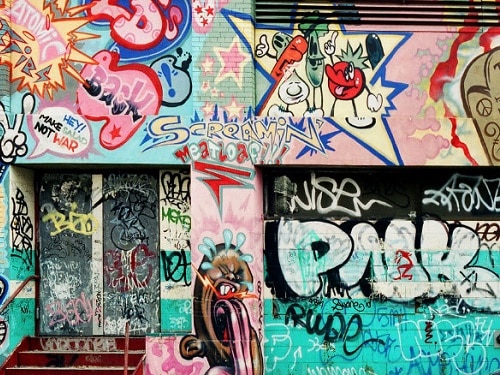The 1990s marked a turning point. In this context, urban artists brought more depth to their expression. Tags made of letters gradually gave way to more conceptual designs using icons, logos and well-known faces. As symbols of renewal, these artists – who began their careers on the sidelines of graffiti culture – can no longer be considered as purely graffiti artists. They diversified their techniques and drew inspiration from other communities such as skate culture and video gaming. Social issues became central and their messages became stronger. Their actions revealed much greater reflection and thought.
Highlights
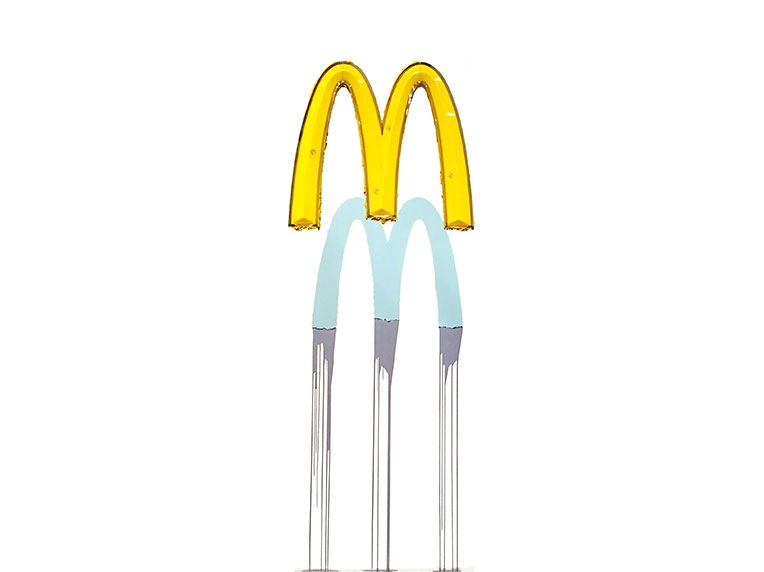
Zevs (b. 1977)
Liquidated McDonald’s logo, 2006
Logotype sign and paint
Photo: courtesy of Magda Danysz Gallery
Photo: courtesy of Magda Danysz Gallery
Zevs responds to the oversaturation of public space with advertising by defending spaces for visual art. Zevs took his name from a train car that almost hit him while was tagging in 1992. He was one of the first to make his tag into a kind of logo. In the late 1990s, Zevs became famous for his Urban Shadows, made with white paint on sidewalks. For his next series in 2001, Visual Attack, he targeted large advertising posters. In 2006, his Liquidated Logos series distorted well-known corporate logos by melting or liquifying their image.

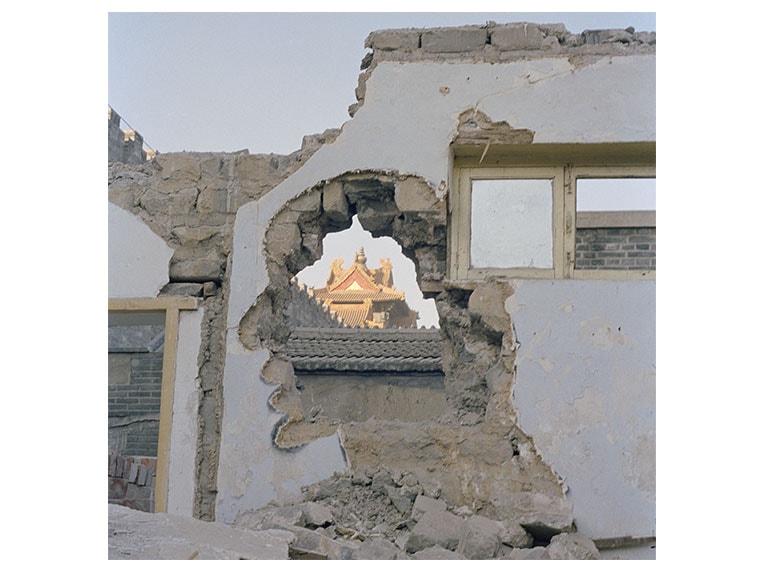
Zhang Dali (b. 1963)
Demolition: Forbidden City, Beijing, 1998
Photograph
Demolition: Forbidden City, Beijing, 1998
Photograph
Courtesy of the artist
Photo: courtesy of the artist
Photo: courtesy of the artist
Zhang Dali is one of the rare Chinese artists to have been connected with graffiti culture. It was during a trip to Bologna in 1984 that he discovered the power of this practice. He quickly became the only graffiti artist working in Beijing and from 1995 to 1998 spray-painted more than 2,000 silhouettes of his head on the walls of condemned structures throughout the city. In some instances, he punched through the wall to create the head in profile. Each work was an act of protest against the demolition of traditional buildings in order to make way for new developments.
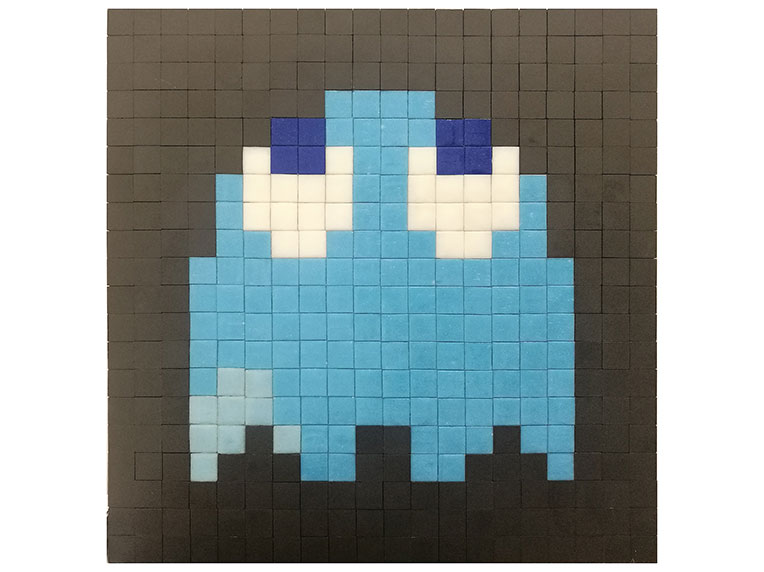
Invader (b. 1969)
Blinky Blue, 2001
Mosaic
Private Collection
Photo: courtesy of Stéphane Bisseuil
Invader was amongst the first to question the idea of spray painting one’s name. Instead of a tag, he chose the iconic Space Invader image from the eponymous video game and that in turn became his identity. He creates the Invader in ‘pixels’ of mosaic tiles and, following the first iteration in 1996, has installed his trademark mosaics in cities across the globe.

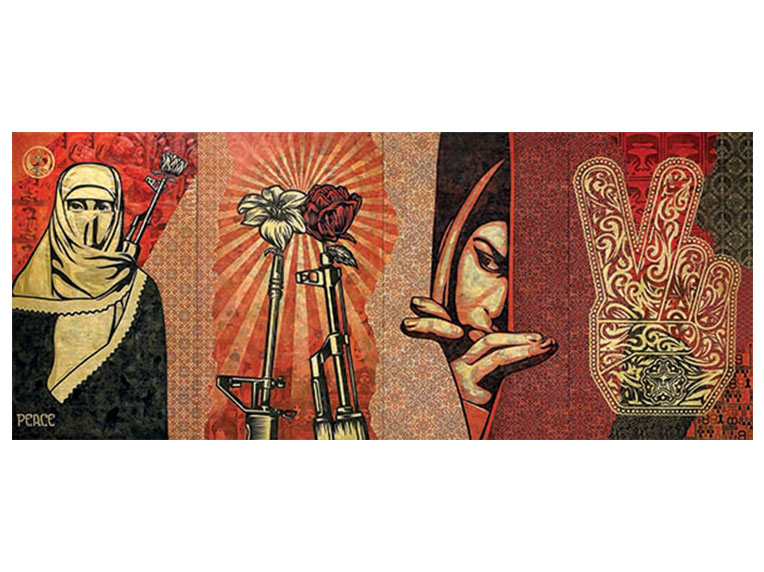
Shepard Fairey (aka Obey) (b. 1970)
Middle East Mural, 2009
Mixed media on 4 canvases
Drago Collection
Photo: courtesy of Drago Publishing
Preferring punk music and skateboarding whilst growing up, Shepard Fairey, known as Obey, had little exposure to old school graffiti culture. In 1989, he created his iconic André the Giant sticker, an image that would follow him throughout his career, calling for ‘visual disobedience’ by placing it everywhere. After that, he created monumental-sized posters continuing the André the Giant theme.
Each time he pastes an image somewhere, he aims to bring awareness to the fact that images (posters, advertisements, etc.) that we see all around us carry layers of meaning that we must learn to decipher.

